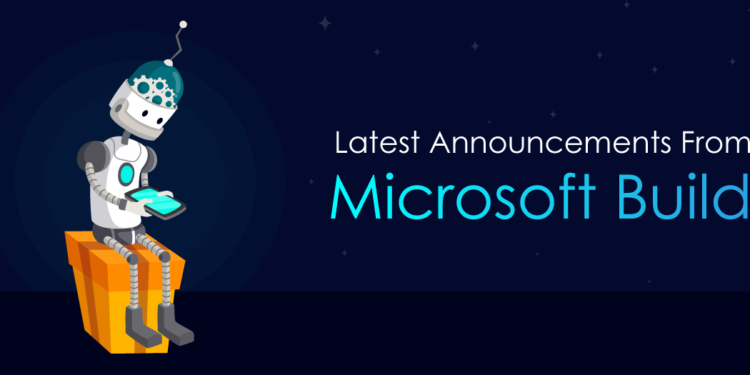Microsoft build is a developer conference that held in every year. As expected, in this year also Microsoft made few announcements related to Visual Studio, HoloLens, Windows, Azure and more.
Here are the most exciting announcements related to the Internet of Things (IoT), DevOps, containers and edge computing.
- Azure SQL Database Edge
- IoT Plug-n-Play
- MLOps
- Updated Cognitive Services
- Azure Pipelines for Kubernetes
- KEDA
- Azure SQL Database Serverless
- No-code Machine Learning Development
- ML.NET 1.0
- Azure IoT Edge Integration with Kubernetes
Azure SQL Database Edge:
Azure SQL Database is an engine that powers the SQL Server now it runs at the edge. Azure SQL Database Edge can deploy based on x86 architecture or ARM which was packaged as a container. The database engines support the time series data and streams. The modules of the database can be integrated with 3rd party modules of Azure or own edge modules of Microsoft. This technology of database is in private preview now. By learning Microsoft Azure then there is a chance to acquire Azure SQL Database knowledge.
IoT Plug-n-Play:
IoT Plug connects IoT devices to the cloud by using open modeling language. The developers can able to connect IoT to the cloud by using IoT plug and play without having a single line embedded code. Without writing an explicit code the Azure IoT devices can be registered. The JSON file is used to connect the Azure to IoT.
MLOps:
Machine learning managing can be done with Microsoft by bringing DevOps processes. MLOps empowers the app developers and data scientists to bring ML models into production based on the GitOps workflow. It also enables teams to track, audit, version, certify and provides orchestration services to manage the life cycle. Service advantages including Azure Machine Learning, DevOps, Kubernetes can add an extra advantage to the framework.
Updated Cognitive Services:
The cognitive service that is built at prioritizes relevant content and reinforcement learning that improves app usability is known as Personalizer. As a result of using prioritizer own Xbox of Microsoft drove a lift of around 40 percent in the user engagement. The benefits of paper and pen can be combined by using the new Ink Recognizer service with the capabilities of embedded digital Ink into apps.
Azure Pipelines for Kubernetes:
To deploy cloud-native apps, Microsoft is building CI/CD workflow through Azure Pipelines. This is done to get integration between the Kubernetes and Github. It can automate from packing container images as Helm charts, deploying the workload and generating the deployment artifacts of Kubernetes. This results in targeting Google Kubernetes Engine (GKE), Elastic Kubernetes Service (EKS), or Azure Kubernetes Service (AKS) for the deployment of cloud-native apps.
KEDA:
Both Red Hat and Microsoft collaborated to build an event-driven scaling with light-weight to extend the Kubernetes are known as KEDA (Kubernetes-based Event-Driven Autoscaling. It can run on any Kubernetes environment to scale-out and scale-in workloads which are based on the number of messages in the queue. This KEDA project can be available in Github.
Azure SQL Database Serverless:
Based on the per-second pricing Azure SQL database serverless can offer SQL Server Engine power and it can be possible through innovative billing model. The compute billing is possible through memory used per second and the number of virtual CPU cores used. The customers only charge for storage when the database is paused. Here customers also define idle time to pause automatically the database.
No-code Machine Learning Development:
Customers have the chance in launching visual designer as the part in the workspace and leveraging the datasets. The Notebooks and Python SDK can be joined by canvas as a no-code option to build machine learning models.
ML.NET 1.0:
ML.NET is a machine learning framework for the developers of .NET. It can be used in workload productions. It is open-source with free of cost and cross-platform designed to bring the machine learning power into .NET apps. ML.NET allow the developers to build and train the models of custom machine learning by using F# or C# for issue clarification, sentiment analysis, and forecasting.
Azure IoT Edge Integration with Kubernetes:
Azure IoT Edge runtime can be extended by Microsoft to run the Kubernetes. On the Kubernetes cluster, customers can manage and deploy edge runtime primitives of native Kubernetes. This mechanism delivers high availability and resiliency to edge the modules of computing.
Conclusion:
These are the latest announcements from Microsoft build. In these, every announcement has some specific quality. Azure SQL Database Edge is useful in data streaming. The purpose of IoT Plug-n-Play is to connect IoT devices to the cloud. MLOps is used to bring machine learning models into production. Updated Cognitive Service improves apps usability. The azure pipeline can deploy cloud-native apps. KEDA is used to build an event-driven scaling with light-weight. Azure SQL Database Server can offer engine power. No-code Machine Learning launch the visual designer in the workspace. ML.NET 1.0 is designed to bring power into .NET apps. Azure IoT Edge Integration with Kubernetes is very much helpful in deploying edge runtime primitives of native Kubernetes. This is how all the latest announcements from Microsoft works.


